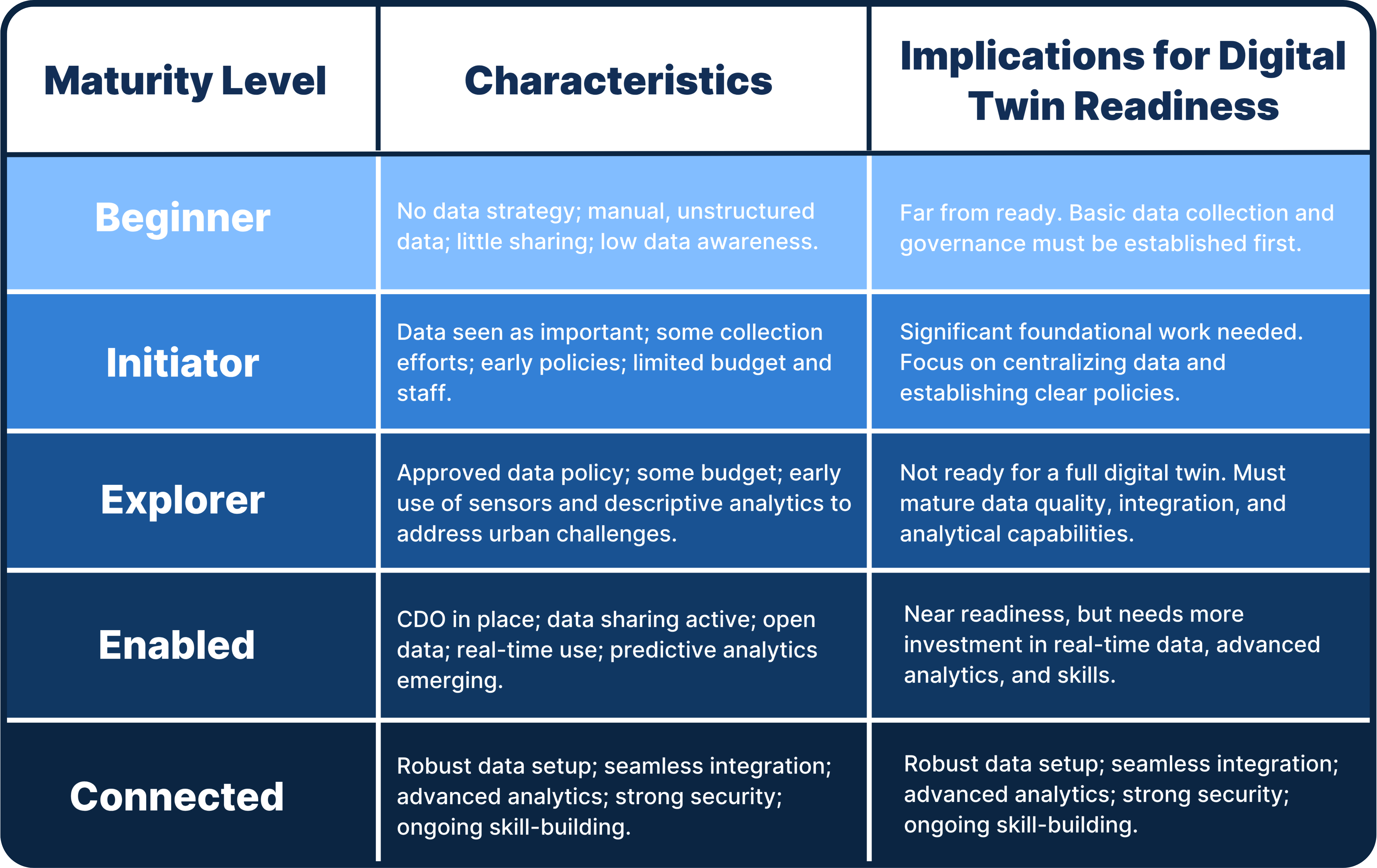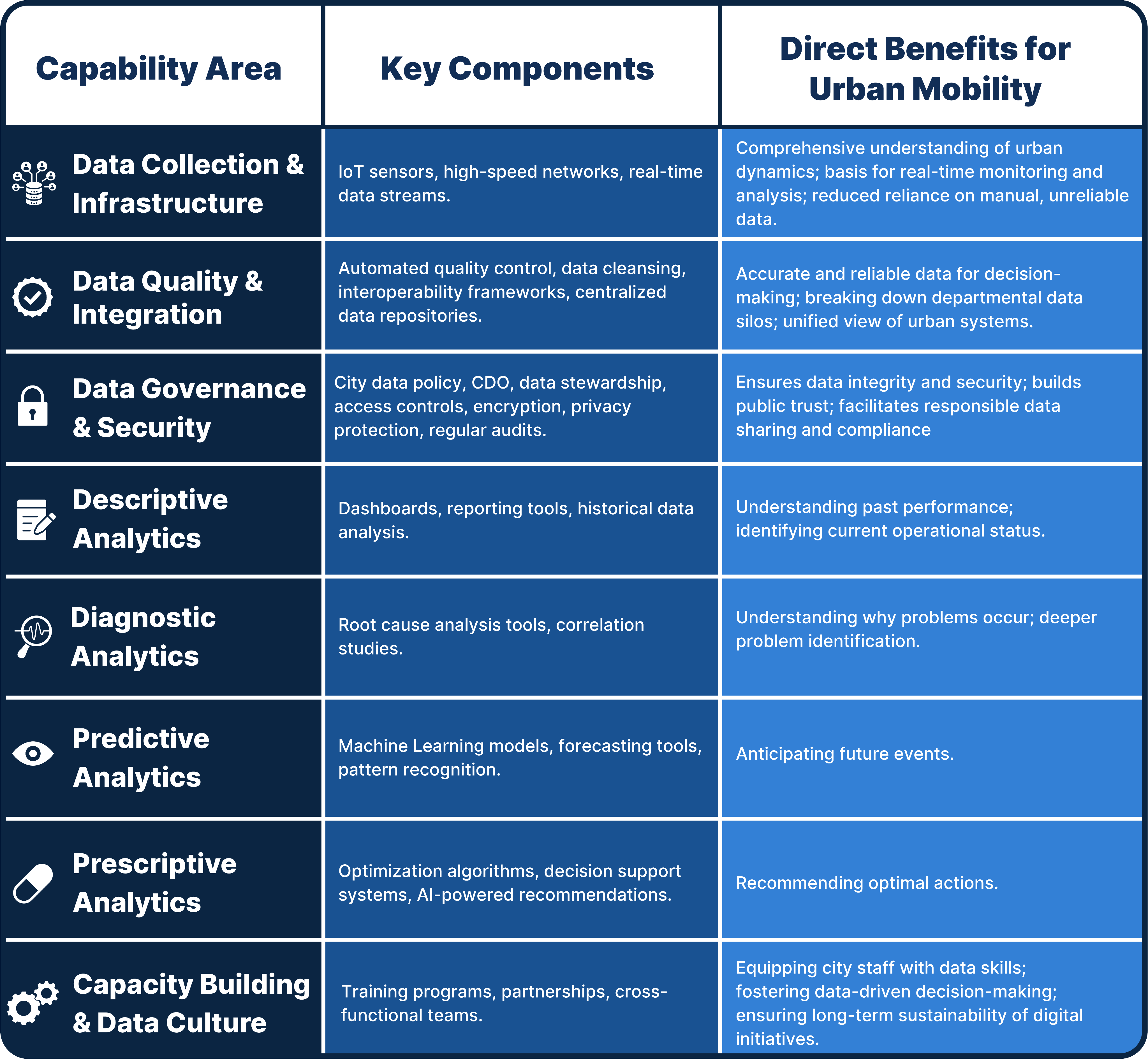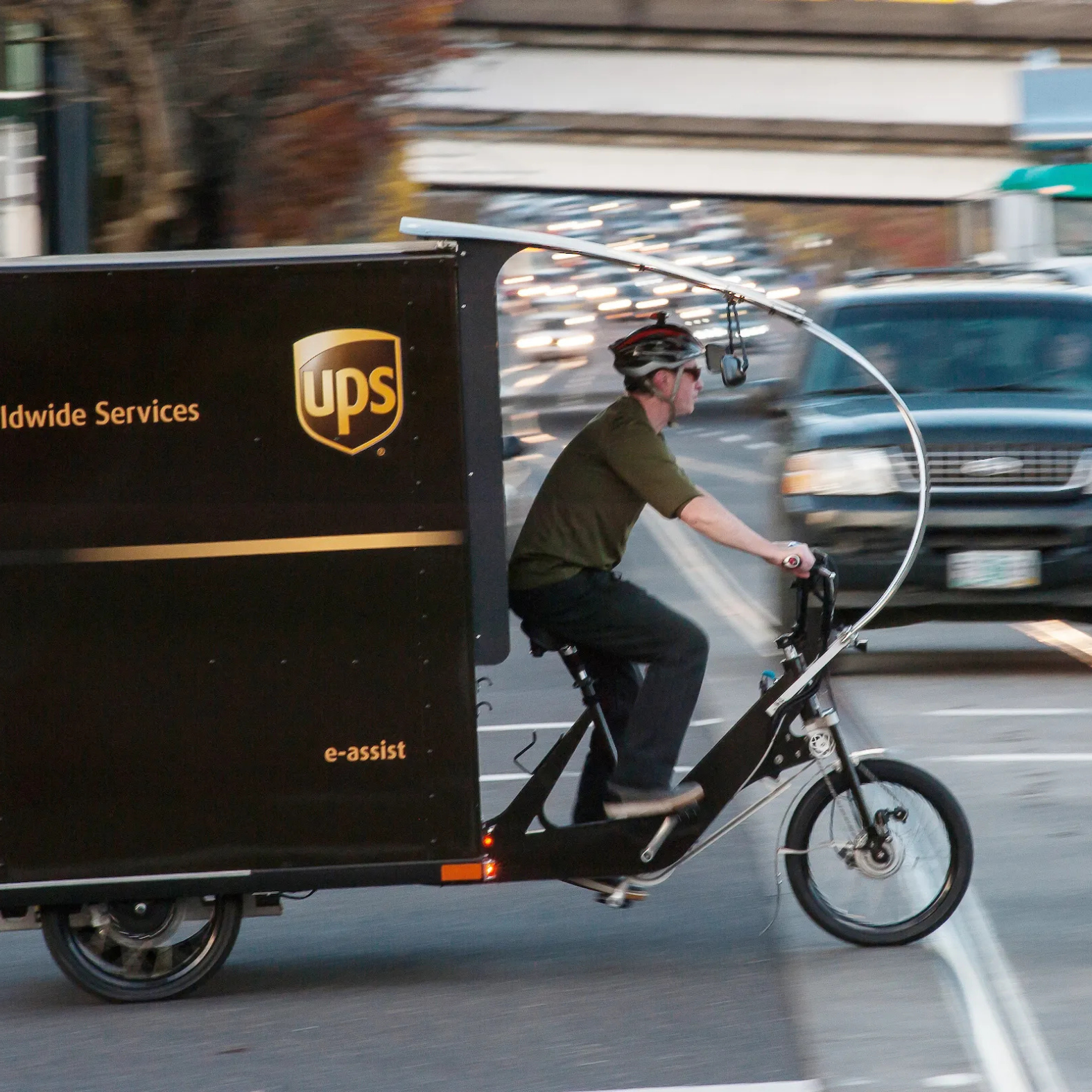🤖 Beyond the Hype: Why Your City Needs Smart Data, Not a Digital Twin (Yet) for Mobility
Explore why most cities should prioritize mastering mobility data over investing in digital twins. Build smarter mobility systems by starting with the right foundations.
%20(1)%20copy.png)
📩 Stay updated on industry trends & Vianova product updates—subscribe to our Newsletter here!
Digital Twins Are Trending—But Most Cities Aren’t Ready Yet

Cities worldwide struggle with urban mobility challenges. The "smart city" vision offers solutions, with "digital twin" technology gaining traction for its potential in real-time data integration and decision-making in sustainable mobility. The digital twin market in smart cities is projected to reach $154 billion by 2030, with a 45% surge in urban mobility implementations between 2020 and 2024.
However, for most cities, a full-fledged digital twin is not yet the most appropriate investment. A significant gap exists between this technology and the actual readiness of urban environments, potentially leading to inefficient resource allocation. This report aims to bridge this gap by discussing current realities.
The Current Reality: Most Cities Are Still Building Their Digital Foundations
Many urban centers globally face fundamental hurdles in digital transformation, impacting their ability to leverage advanced technologies like digital twins. Key challenges include financial constraints, substantial upfront investment for smart city technologies, and legacy infrastructure leading to system integration issues and data silos. A critical impediment is the skills gap, with many city governments lacking specialized expertise in data analytics, cybersecurity, and IoT management. Resistance to change and public trust concerns also undermine initiatives.
These challenges are compounded by low data maturity levels; up to 90% of city-scale digital twin implementations are still in "initial to medium stages," focusing on basic 3D modeling rather than advanced analytics. Many cities are still establishing fundamental data policies, budgets, and internal capacity. Global assessments confirm uneven progress in digital readiness. Investing in a digital twin without addressing these issues is inefficient and carries a high risk of failure, as many smart city initiatives "underdeliver" due to a lack of readiness. Cities must prioritize building robust, foundational data capabilities first.


The Essential First Step: Mastering Your Mobility Data Analytics
For cities to enhance urban mobility, a robust data analytics strategy is the most impactful and essential first step. Efficient mobility management fundamentally hinges on effective data utilization. This foundational work provides immediate benefits and lays groundwork for future advanced deployments.

- Data Collection and Infrastructure: Deploying modern sensors for real-time data and ensuring robust connectivity.
- Data Quality and Integration: Implementing automated quality control and integrating fragmented information.
- Data Governance: Establishing clear policies, procedures, and standards for data, with roles like a Chief Data Officer (CDO) being vital.
- Data Platforms and Tools: Central data repositories, integration capabilities, and powerful analytics tools for actionable insights.
Cities can immediately leverage various types of data analytics: Descriptive ("what happened"), Diagnostic ("why something happened"), Predictive ("what is most likely to happen"), and Prescriptive ("actions you can take"). Examples like California's data audits and Santa Clara Valley Water District's use of GIS tablets show significant improvements without a full digital twin. Finally, capacity building and fostering a data-driven culture are crucial through training, talent attraction, and alliances.


Digital Twins: A Powerful Tool for Advanced Mobility Challenges
While foundational data analytics is the immediate focus, digital twins hold significant potential for advanced urban mobility challenges. A true urban digital twin is a sophisticated, multi-layered system for comprehensive insights. It typically comprises three integrated layers: the Digital City (virtual model), the Connected City (real-time monitoring via IoT), and the Intelligent City (centralized data, AI, simulations for insights).

- Complex Scenario Testing and Simulation: Allowing planners to run "what-if" scenarios virtually to evaluate impacts and refine policies, minimizing risks.
- Large-Scale Infrastructure Optimization: Monitoring and optimizing urban networks in real-time, like public transportation, for efficient routes and predictive maintenance.
- Enhanced Urban Planning and Citizen Engagement: Providing detailed inspections of planned buildings and a medium for public review and feedback.
However, achieving these capabilities requires significant prerequisites most cities currently lack. Effectiveness is tied to high-quality, integrated, real-time data from diverse sources. Implementing and managing digital twins demands specialized expertise in AI, IoT, and advanced analytics, often a skills gap for cities. The substantial investment extends beyond initial setup to ongoing maintenance and talent retention. Therefore, digital twins are best suited for cities with high digital maturity and robust data foundations.
A Strategic Roadmap: Phased Digital Transformation for Urban Mobility
For truly intelligent urban mobility management, a phased, iterative approach to digital transformation is essential, reducing risks by 15-25%.

- Assess Current Infrastructure and Capabilities: Thoroughly evaluate existing infrastructure, connectivity, sensor deployments, data management, and technical expertise to identify gaps.
- Establish a Foundational Technology Infrastructure: Prioritize investing in robust connectivity (fiber, 5G, LPWAN) and deploying a basic IoT sensor network for data collection.
- Implement Robust Data Management Systems: Establish central data repositories, develop strong data integration, implement security measures, and formalize data governance by appointing a Chief Data Officer.
- Deploy Pilot Analytics Projects: Start with small, focused projects addressing specific urban mobility problems using existing data. This iterative approach tests technologies, refines strategies, and demonstrates tangible value.
- Scale and Evolve Towards Advanced Solutions: Only after achieving maturity in foundational data capabilities and success in pilots should cities invest in advanced applications, including digital twins. This ensures strategic investments, incremental capacity building, fostered public trust, and adaptability.
Conclusion: Building a Smarter Future, One Data Point at a Time
The allure of digital twins for urban mobility is undeniable, promising hyper-efficient cities. However, for most urban centers, pursuing a full-scale digital twin is premature due to financial constraints, legacy infrastructure, fragmented data, and skills gaps.
Instead, cities should immediately focus on building a robust data strategy and mastering urban mobility data analytics. This involves improving data collection, ensuring quality and integration, establishing governance, and investing in human capital. By prioritizing descriptive, diagnostic, predictive, and prescriptive analytics, cities can achieve significant, tangible improvements now.
A truly smarter future for urban mobility is about laying solid groundwork, one data point at a time. A pragmatic, phased approach builds internal capacity, demonstrates value through pilot projects, and fosters a data-driven culture. This ensures that when foundational capabilities are in place, a digital twin can seamlessly integrate into an intelligent urban ecosystem. For today, the most intelligent decision is to focus on making your data work for you.
About Vianova

Vianova is the data analytics solution to operate the mobility world. Our platform harnesses the power of connected vehicles and IoT data, to provide actionable insights to plan for safer, greener, and more efficient transportation infrastructures.
From enabling regulation of shared mobility to transforming last-mile deliveries, and mapping road risk hotspots, Vianova serves 150+ cities, fleet operators, and enterprises across the globe to change the way people and goods move.
Ready to learn more? Visit our page to get in touch.
👉 Read our previous blog here!
Become part
of the movement
in the Vianova world.
Let's get in touch
Lets talk! We are excited to hear how we can help you solve your mobility challenges.



